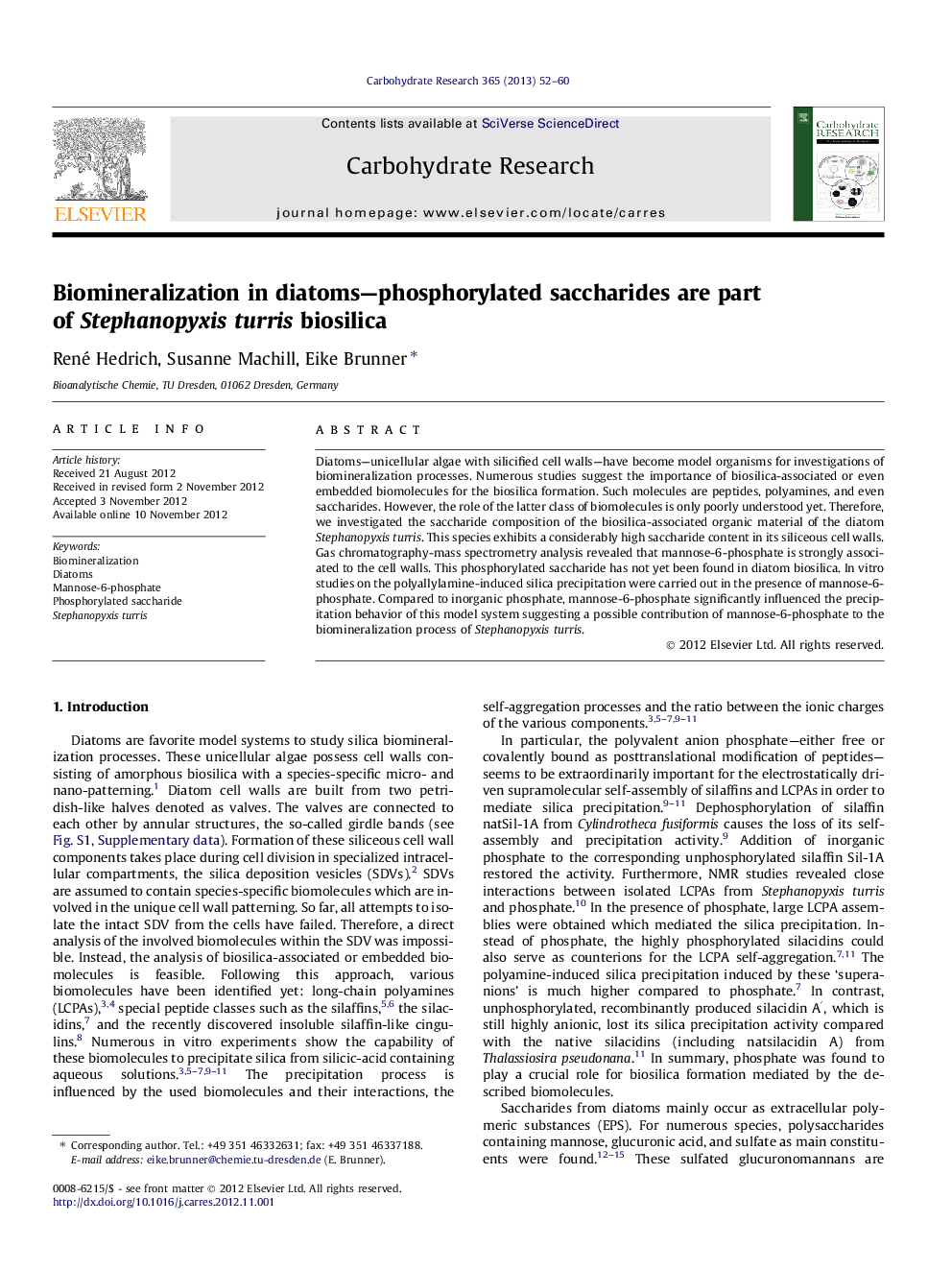| Article ID | Journal | Published Year | Pages | File Type |
|---|---|---|---|---|
| 1387735 | Carbohydrate Research | 2013 | 9 Pages |
Diatoms—unicellular algae with silicified cell walls—have become model organisms for investigations of biomineralization processes. Numerous studies suggest the importance of biosilica-associated or even embedded biomolecules for the biosilica formation. Such molecules are peptides, polyamines, and even saccharides. However, the role of the latter class of biomolecules is only poorly understood yet. Therefore, we investigated the saccharide composition of the biosilica-associated organic material of the diatom Stephanopyxis turris. This species exhibits a considerably high saccharide content in its siliceous cell walls. Gas chromatography-mass spectrometry analysis revealed that mannose-6-phosphate is strongly associated to the cell walls. This phosphorylated saccharide has not yet been found in diatom biosilica. In vitro studies on the polyallylamine-induced silica precipitation were carried out in the presence of mannose-6-phosphate. Compared to inorganic phosphate, mannose-6-phosphate significantly influenced the precipitation behavior of this model system suggesting a possible contribution of mannose-6-phosphate to the biomineralization process of Stephanopyxis turris.
Graphical abstractFigure optionsDownload full-size imageDownload as PowerPoint slideHighlights► Investigation of the saccharide fraction of the biosilica from Stephanopyxis turris. ► We report for the first time a biosilica-associated phosphorylated saccharide. ► Our studies suggest a contribution to the biomineralization of this diatom.
